Among all the innovative inventions that have emerged in the modern world, no other achievement has had far reaching consequences as harvesting nuclear energy. Though this has the ability to solve the energy crisis of the world, but at the same time, it does also have the capability to wipe out entire cities. Hiroshima and Nagasaki came to news for all the wrong reasons, that is known by almost all high school students across the world.
But were this the first-time weapons like this had been used? Have they never been used before? There are many lesser known facts, the story about which never has been told. The following lines are a reflection of the forgotten pages of ancient mythology, which never found expression in popular chapters of human history.
Man has used weapons for his protection and hunting purposes from time immemorial, which with time evolved from stones and sticks to – sword, daggers and bows and arrows and other weapons, used by historic kings and their armies. However, the problem arises when the weapons described in ancient literature, resemble modern 21st century weapons in their use and devastating effects. In this aspect, a brief discussion of the concerned civilization and its culture would be relevant.
Of the 3 cradles of civilization – ancient Egypt, Mesopotamia, and Indus valley civilization, the early Indian civilization was the most expansive, with a population of over 5 million in its peak. The people living followed the Hindu religion, which has two main epics – Ramayana and Mahabharata. These epics, which highlights ancient Indian values and philosophy, is basically based on the story of the eternal conflict of good versus evil. Interestingly both of these has anecdotes, which resemble nuclear warfare in modern history.
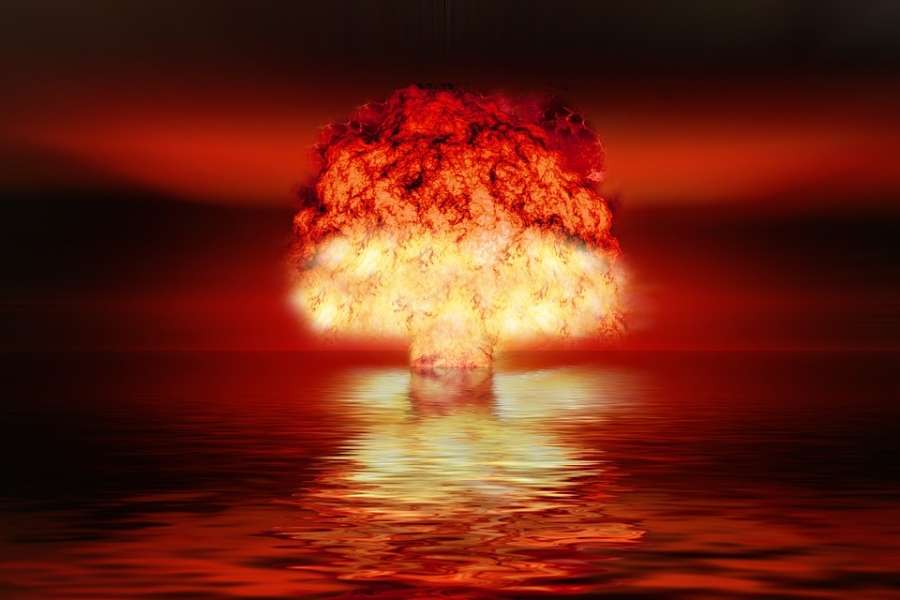
Although there are many incidents from both Ramayana and Mahabharata which resemble events that occur in a nuclear war, but it is Bhagavad Gita – a part of Bhisma Parva (Book of Bhisma) of Mahabharata, which is mostly talked about in this context. Few of the notable slokas (verses) which hints of nuclear war in ancient India are -

The Sanskrit verse mentioned in Bhagavad Gita when translated means – “If thousands of Suns rose up into the sky simultaneously, they might resemble the radiant splendour of the mighty being.”
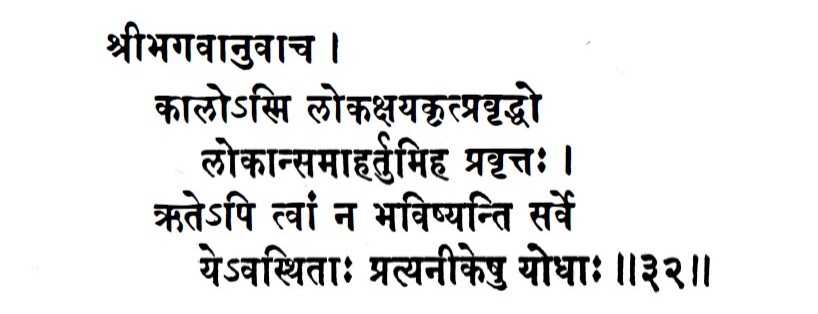
The Sanskrit verse mentioned in Bhagavad Gita when translated means – “The supreme lord said, I am time, destroyer of the worlds, and I have come here to destroy all people. With the exception of you (The Pandavas), all the soldiers on the opposite side situated here will be slain.”
These ancient weapons used were known as “Astra” and has been mentioned in many different parts of the epic, all of which had tremendous destruction power. Not just they would annihilate complete armies, but would also blow away, vast armies of men and elephant - like dry leaves are swept away by a strong storm.
Different weapons have been described in ancient Hindu scriptures, the most important being – Pashupatastra, Narayanastra, Brahmashirshasta, Brahmastra, Trishula, Vajra etc. Of these – Brahmastra, has been described most frequently, showing the importance of this weapon in these texts. This weapon was created by lord Brahma – the Hindu god who created the entire creation. This weapon carried the power of creator of the Universe and had the capability to destroy entire cities and race of people.
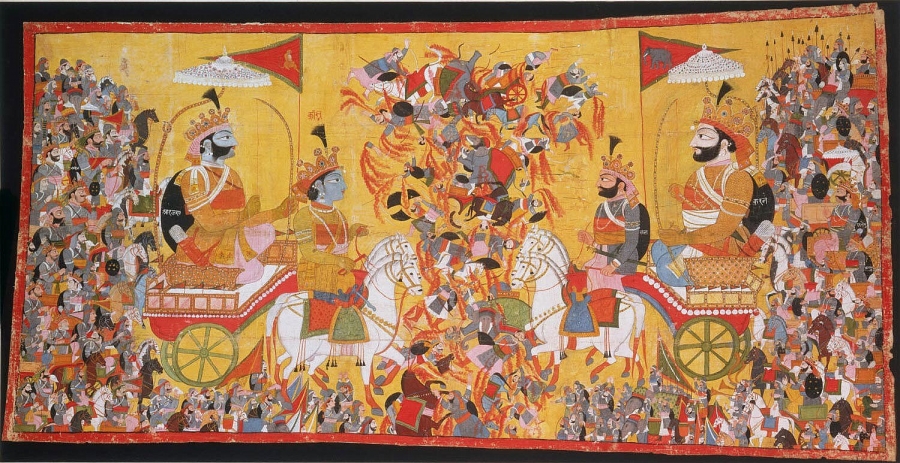
Use of Brahmastra would unleash unparalleled energy, manifesting as hurricane winds, heat and light equalling strength of thousands of Suns present at the same time. The residual effect would linger on for centuries after the initial attack. The climate would be altered, rainfall and growth of vegetation would cease, those who would survive would become infertile. Even if any birth took place- generations of humans & animals to come, would suffer from hideous deformities.
Although the description given in the ancient Hindu epics, do resemble a modern use of nuclear weapons; but were this just creation of an imaginative mind, or are there any scientific evidence to support the mentioned facts? It seems there are a few.
In the north-western province of Rajasthan in modern day India, approximately 15 kilometres from the city of Jodhpur, a radioactive zone with a layer of radioactive ash (under the ground surface) was found accidently, during excavation for a housing project. Further investigation revealed findings similar to that of a site of a nuclear detonation. Just a little more towards the west, are situated the ancient cities of Harappa and Mohenjo Daro, in what is now Pakistan (but in ancient times, was a part of India). The ruins of these cities show evidence of a nuclear explosion, happening thousands of years ago.
Harappa and Mohenjo Daro were cities of ancient Indus valley civilization and date back to 2500 BC. Excavation in Mohenjo Daro, which started in early 20th century, have demonstrated multiple skeletons scattered across the city, indicative of death which were sudden and of violent nature. Incidentally, high levels of radioactivity were also discovered in many places.
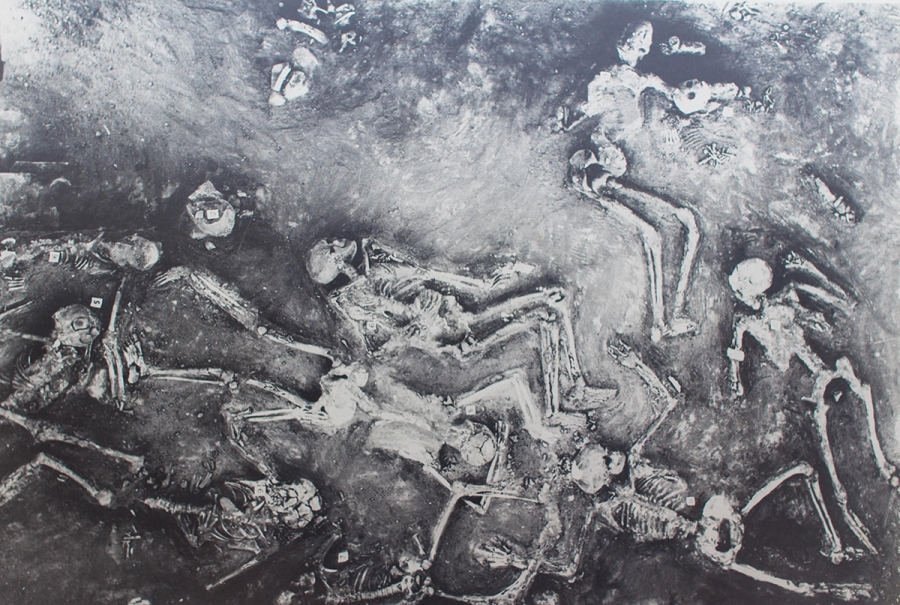
David Davenport, a researcher investigating the area, discovered a 50-yard radius area, believed to have been the blast epicentre. Here all the objects were fused and glassified, believed to have been formed by melting of rocks, by a temperature estimated to be around 1500 degrees centigrade. Another researcher had noted, that one of the skeletons had more than 50 times radiation levels than what would be expected. Even in the modern world, rates of certain cancers are higher in Jodhpur, than the national average (1983 National Cancer Registry Record).
Opinion regarding above stated facts has clearly been divided, even among scholars in fields of Science, Archaeology, and History, in spite of western experts (who were neither Indian nor Hindu) being actively involved in excavation and study of the supposed site of ancient nuclear warfare. For every claim, a counter claim has been presented, which would certainly be understandable when considering that the facts presented, are really controversial. The name which comes up again and again in this discussion is that of Robert Oppenheimer, the man who was responsible for the development of nuclear weapons in the modern world. However, when he was questioned if his testing of detonation of an atomic device was the first experiment of its kind? He reportedly replied – yes, in modern times.
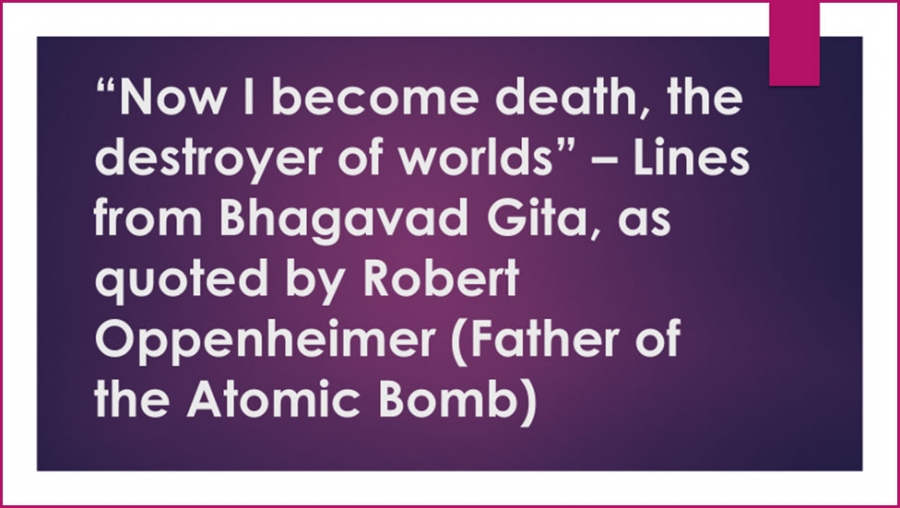
The answer of Oppenheimer raised many uncomfortable questions, including if similar kind of explosions had occurred in the past? The association between a nuclear explosion and ancient Hindu epic like – Mahabharata (of which Bhagavad Gita is a part) grew stronger when Oppenheimer quoted the lines – “Now I become death, destroyer of the worlds”, from chapter 11 verse 32 of Bhagavad Gita.
Although Oppenheimer was of secular Jewish family background and a professor of theoretical physics and thermodynamics by profession, he was greatly influenced and impressed by the ideas of Bhagavad Gita and had seriously studied Sanskrit to know more about the book and other facts associated with it. The deeper philosophical and moral meanings of the religious scripture were not lost on the esteemed scientist. This has led many to believe that his quotation of Gita, may have been more of philosophical nature, than expressing literal association with the Mahabharata war or reverse engineering, the technologies used in the ancient war.
Many others in the western hemisphere also do share the same kind of fascination about ancient Indian civilization. Lord Shiva is one of the supreme gods of the Hindu pantheon and his weapon – Trishula (three-pronged spear), is also one of the strongest weapons of the gods (considered by many as, being stronger than Brahmastra). Lawrence Livermore National Laboratory situated in Livermore, California (USA) is a federal research and developmental facility for science and technology, which also recognises and respects the technical expertise, described in the ancient Indian mythology and culture. The said laboratory also has a statue of Lord Shiva in its lobby and a powerful 20 beam infrared neodymium glass laser built in 1977 was also named Shiva Laser.
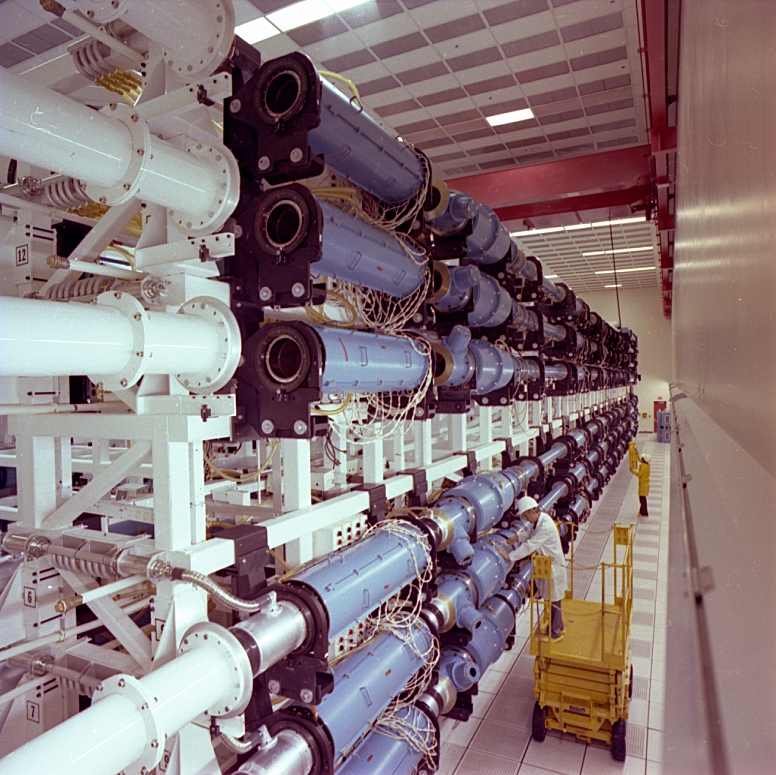
Whether these weapons mentioned in the ancient epics really existed or not, may be a controversial issue; but the imagination and conceptualization of these technologies would remain unmatched for many millennia to come. The fact that nuclear warfare of the modern world would resemble the graphic description so accurately of a war, discussed in a religious epic that was written thousands of years ago, is a miracle in itself. At the end of the day, people believe what they want to believe and see what they want to see & truth at best is always a partially told story.
Must read about: Harald Bluetooth